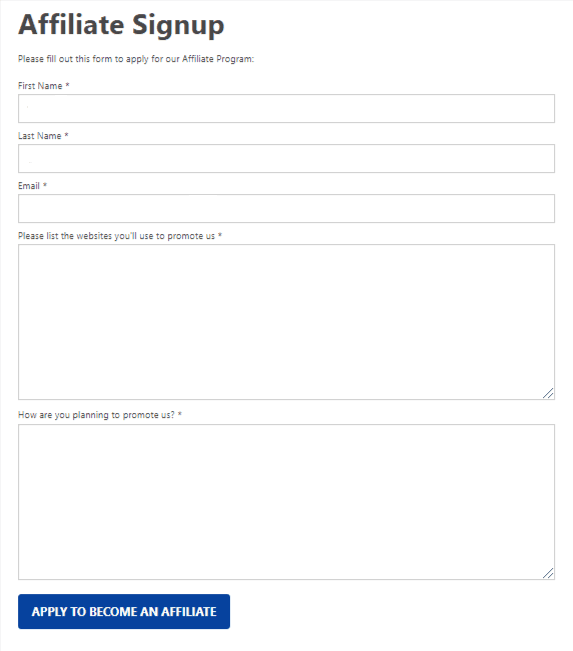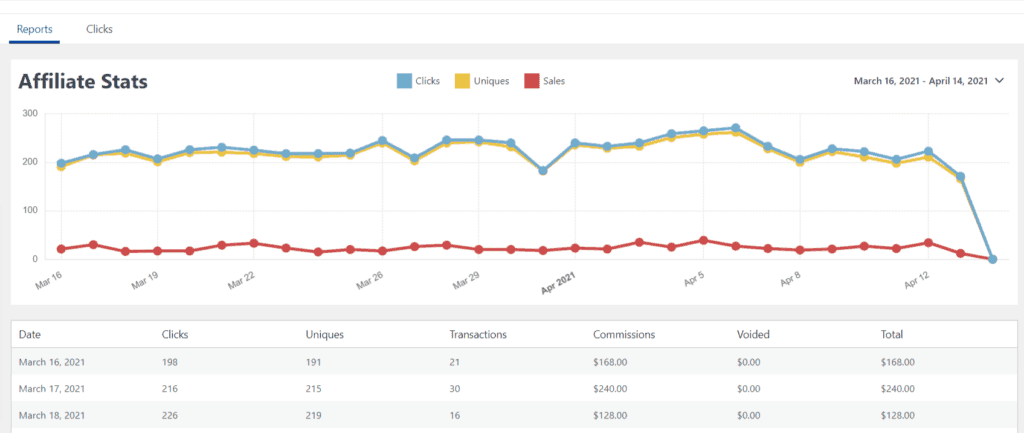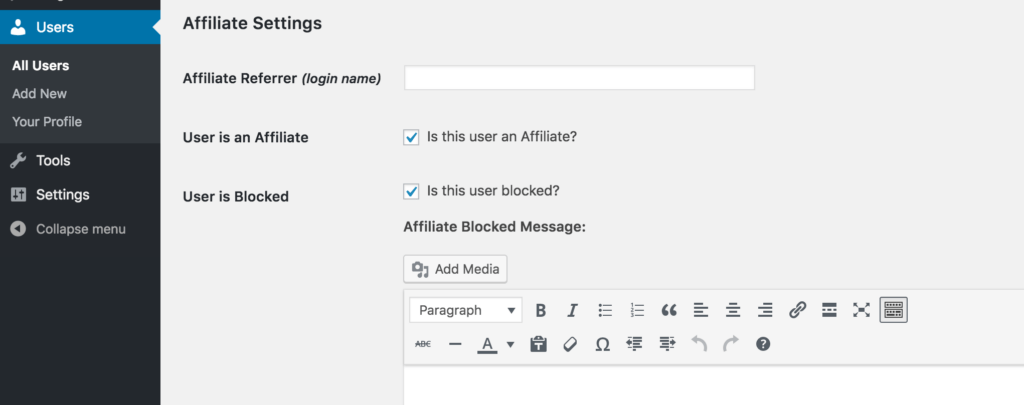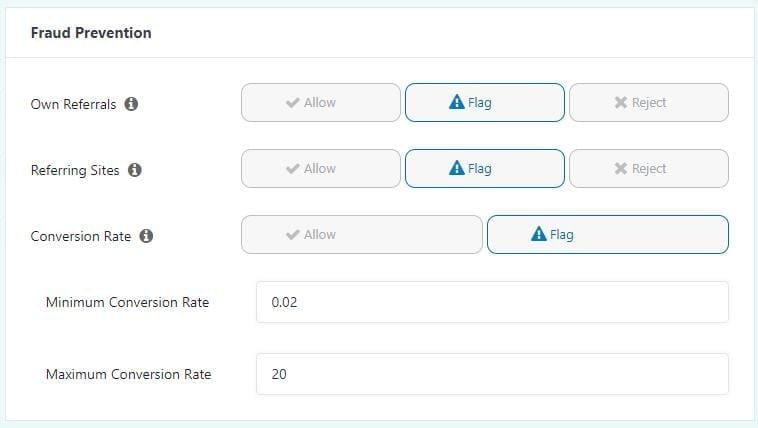Running an affiliate marketing program is an effective way to grow your business and increase revenue. Unfortunately, there is also a risk of malicious activities, such as affiliate fraud, that can hurt your earnings and undermine your advertising initiatives.
The issue of affiliate fraud is a serious one, and it’s on the rise. However, identifying the various methods used by bad actors and illegitimate affiliates can help safeguard you against it.
In this post, we’ll explain what affiliate fraud is and discuss some of the most common types. Then we’ll provide you with three key methods you can use to prevent it. Let’s get started!
An Introduction to Affiliate Marketing Fraud: A Must-Read for Merchants
Affiliate marketing stands out as a brilliant strategy for online advertising, pivoting on a performance-based model. Brands partner with affiliates, who then promote products or services using distinct links or referral codes.
When these promotions translate into sales or conversions, affiliates earn a commission. This setup not only offers affiliates a path to passive income but also serves as an efficient marketing lever for brands aiming to elevate conversions and revenues.
However, the affiliate marketing model isn’t without its vulnerabilities, particularly when it comes to digital tracking and attribution. Startlingly, over a third of digital advertising traffic is marred by fraud, as per recent studies.
The crux of the issue lies in the exploitation of the affiliate marketing framework by fraudsters, who deceitfully claim commissions, thereby impacting both affiliate marketers and merchants.
Put simply, affiliate fraud is when bad actors participate in or execute illegal activities in order to scam affiliate marketers or merchants. These scammers can implement a variety of methods to trick companies into paying them affiliate commissions that aren’t actually valid.
Unpacking Affiliate Fraud: What You Need to Know
Affiliate fraud comes in many different forms. Some of the most common types include:
Click Fraud
- What it looks like: You might notice an unusual spike in clicks without a corresponding increase in conversions, or you might see a high number of clicks from suspicious or irrelevant sources.
With click fraud, scammers can flood pay per click (PPC) campaigns with fraudulent or invalid clicks, often through bots or artificial activity that uses software to simulate real users.
- Red flags to watch: Keep an eye on irregular traffic patterns, such as clicks coming in at odd hours or from the same IP addresses in rapid succession.
Typosquatting
- What it looks like: This refers to hijacking a URL that’s similar to a company’s name. Here, fraudsters create domain names that are visually similar to a legitimate brand’s, capturing misdirected traffic.
- Red flags to watch: Monitor for domains that mimic your brand’s URL closely, and use tools to alert you of new domain registrations that could be attempting to siphon off your traffic.
Traffic Diverting
Cookie Stuffing
App Installs (Attribution Fraud)
- What it looks like: Fraudsters use stolen credit card information to perform unauthorized app installs, manipulating attribution platforms to claim commissions.
- Red flags to watch: A surge in app installations not matched by genuine user engagement or conversions, or installs that trace back to suspicious sources, could be indicative of this type of fraud.
PPC Fraud
- What it looks like: Bad actors use paid advertising to inappropriately drive traffic through affiliate links.
This might include bidding on restricted branded keywords or creating ads that link directly to affiliate tracking URLs without permission.
Perpetrators use these strategies to siphon off commissions from genuine traffic or to inflate the costs for the brand’s legitimate ad campaigns.
- Red Flags to Watch: There are several things to look out for…
- Unexpected Traffic Sources: If your analytics show incoming traffic from paid sources like Google Ads or Bing Ads where affiliates are typically restricted from advertising, this could be a sign of PPC fraud.
- Surge in Costs: A sudden increase in cost per click (CPC) for your branded keywords can indicate that affiliates are competing for the same keywords, which is often prohibited in affiliate agreements.
- Abnormal Conversion Patterns: Seeing conversions that don’t match the typical user journey or that have unusually high or low conversion rates compared to organic affiliate-driven traffic might suggest manipulative tactics are being used.
If you participate in affiliate marketing, these types of fraud can have devastating effects. As a merchant, you might end up paying for clicks that don’t actually increase sales, or face unnecessary expenses that threaten your bottom line. Additionally, affiliate partners could be unjustly blamed or penalized for the black hat behavior of scammers.
Affiliate Fraud: 4 Ways to Prevent It
Now that we have a better understanding of exactly what affiliate fraud is and the various forms it can take, it’s time to learn how to avoid it. Let’s take a look at 4 effective methods you can use to prevent affiliate fraud.
1. Carefully Screen and Communicate With Affiliates
Adopting a strategic vetting process to make sure affiliates are legitimate from the start can go a long way towards preventing fraud. For example, you might consider implementing a multi-stage application process and configuring it so that you have to manually approve new affiliates:

When screening a potential affiliate, you’ll want to verify that they have an active, legitimate website and that their content aligns with your products or services. This can reduce the risk of a bad actor making their way in undetected.
Even once you approve of an affiliate, it’s important to clearly communicate your terms and conditions. Having a lawyer look over your policies can help you ensure that there’s no room for error, or potential loopholes that could lead to affiliate fraud or abuse.
2. Closely Monitor Traffic and Program Analytics
It’s hard to spot illegal or suspicious activity happening with your affiliate program if you don’t have a way of actively monitoring it.
By regularly and closely tracking your affiliate marketing analytics, you’re better positioned to identify a sudden surge in traffic, a concerning influx of redirect pages, or a questionable number of transactions attributed to a single IP address.
Fortunately, there are affiliate program tools and plugins you can use to make doing this easier. For example, our Easy Affiliate plugin provides a robust admin dashboard with link tracking as well as analytics and reporting features, so you can easily uncover anomalies:

Also, because this solution integrates seamlessly with WordPress, you won’t have to worry about juggling multiple platforms and tools. All the insight you’ll need will be accessible from within your dashboard.
For PPC fraud you can use Easy Affiliate in conjunction with Google Analytics to detect fraudulent behavior. Easy Affiliate automatically adds UTM parameters to track sources of PPC clicks and identify bad actors.
Monitoring these metrics allows you to maintain control over your affiliate marketing expenses and ensure that your investment leads to real, profitable engagement.
For more info, and details on how to analyze GA4 for warning signs, read our dedicated blog on PPC affiliate fraud detection.
3. Block Suspicious IP Addresses and Remove Unethical Affiliates
Mistakes happen, and not all odd behavior or abnormalities that occur within your affiliate program necessarily mean that you have a cybercriminal on your hands. However, it’s best to err on the safe side.
If the same user repeatedly demonstrates suspicious behavior or violates your terms and conditions, it’s likely best to remove them.
You don’t want to risk compromising your entire affiliate program, or lose out on profits due to one careless, malicious, or greedy participant.
If you’re an Easy Affiliate user, you’ll have the convenience of doing this directly through the plugin. There’s a dedicated section for your list of affiliates, and removing one is as simple as checking a “block affiliate” box.

You’ll also be able to use the plugin’s settings to leverage a variety of other key features.
For example, you can disable the option to automatically add users, and turn on a setting to display your affiliate agreement. There’s even a feature for modifying the number of days before an affiliate cookie expires. This can help prevent the fraudulent technique we discussed earlier that’s known as “cookie stuffing”.
4. Use a Fraud Prevention Platform
Easy Affiliate includes a Fraud Prevention Add-on that flags suspicious activity before you pay out. The greatest benefit is that you don’t have to second guess every single commission you send out. Instead, you get piece of mind.

Conclusion
Affiliate marketing is a popular, powerful, and effective way to grow your business, promote products, and increase revenue. However, it’s important to take careful and proactive measures to protect your program and campaigns from scammers.
In this post, we discussed three ways to prevent affiliate fraud:
- Carefully screen and communicate with your affiliates.
- Closely monitor your affiliate program analytics and user behavior.
- Block suspicious IP addresses and remove unethical affiliates.
Do you have any questions about preventing fraud in affiliate marketing? Let us know in the comments section below!
If you liked this post, be sure to follow us on Twitter, Facebook, and LinkedIn! And don’t forget to subscribe in the box below.
Discover more from reviewer4you.com
Subscribe to get the latest posts to your email.





